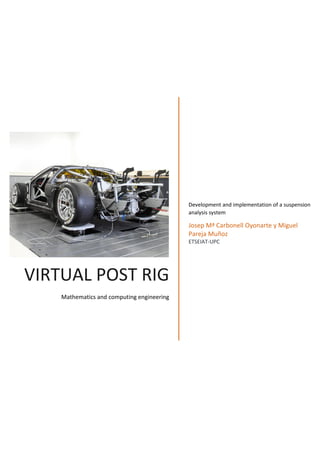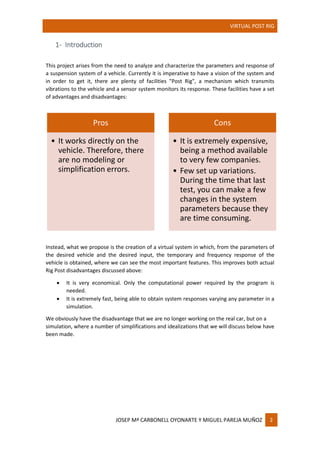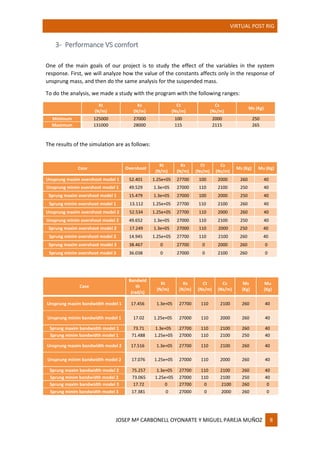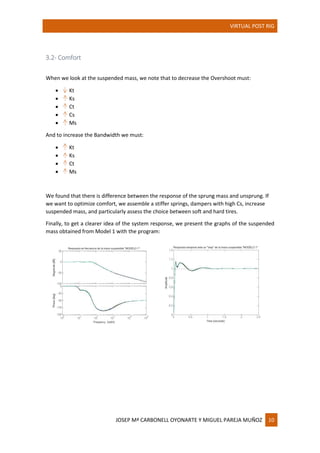This document describes the development and implementation of a virtual suspension analysis system called the Virtual Post Rig. The system aims to analyze and characterize suspension parameters and response through computer simulation, providing advantages over physical testing such as lower cost and faster experimentation. The system models the vehicle suspension using different levels of simplification. It obtains transfer functions relating sprung and unsprung mass response to road inputs. These are used to calculate performance metrics and compare suspension designs, balancing performance and comfort factors.















